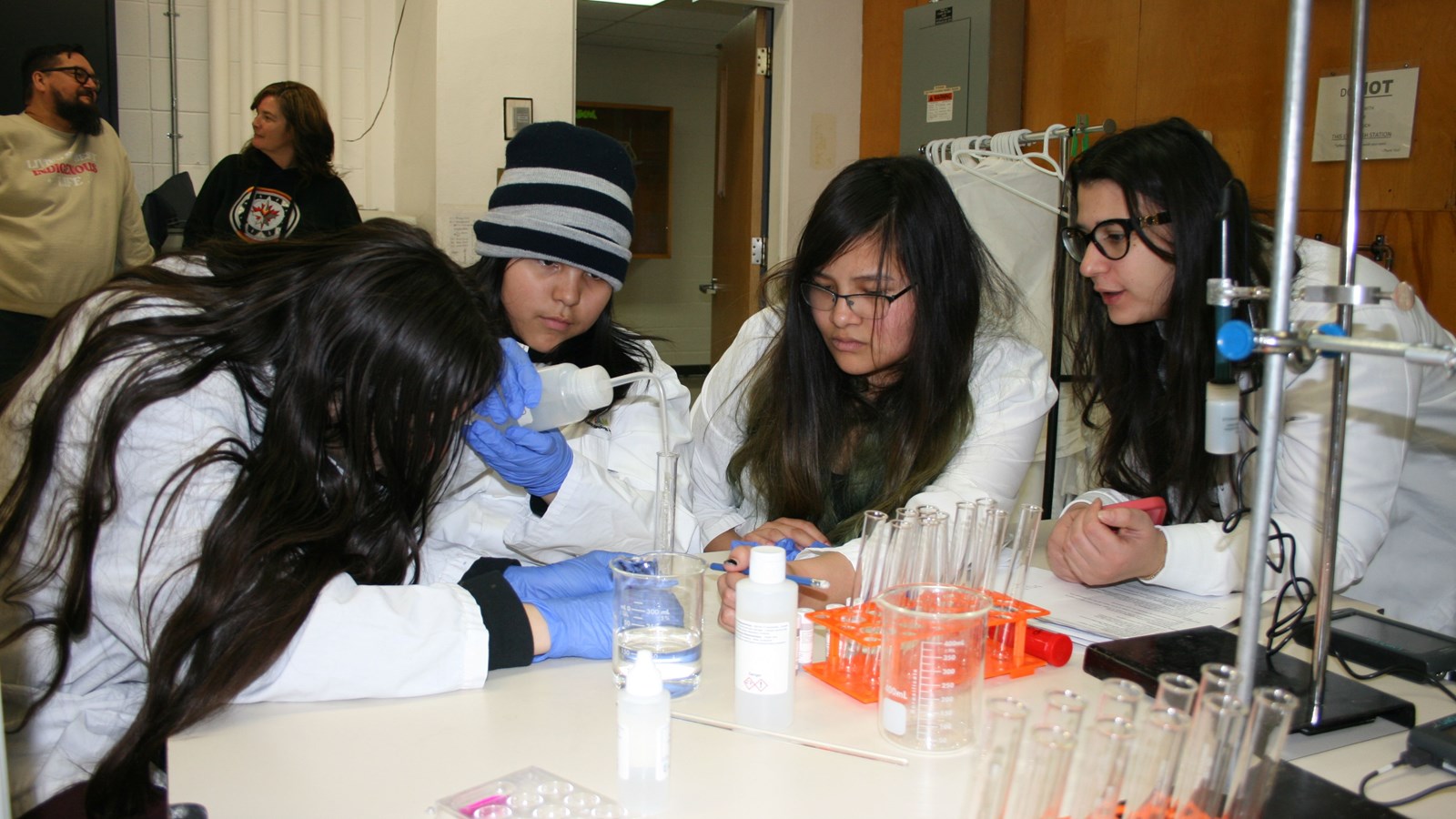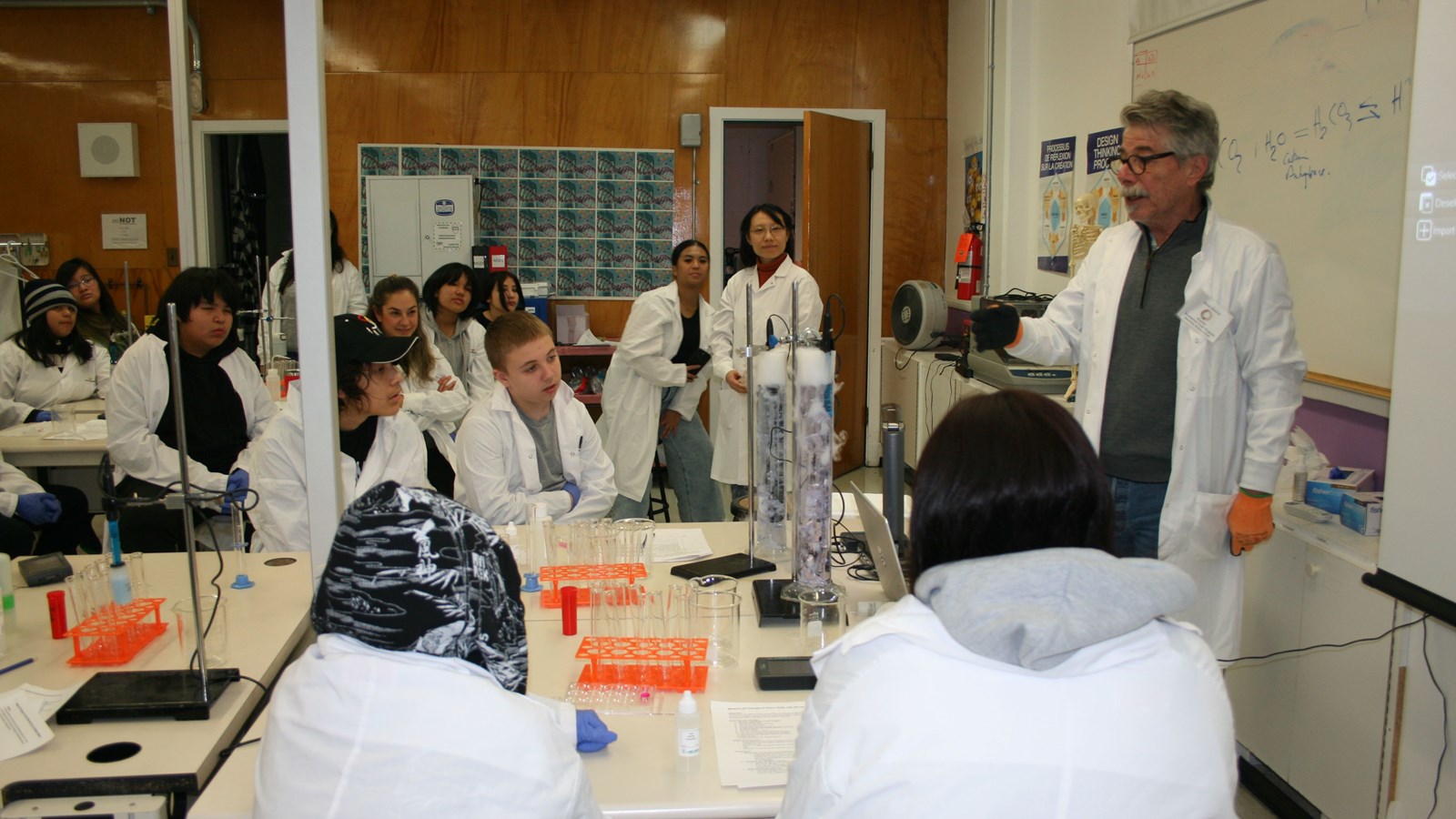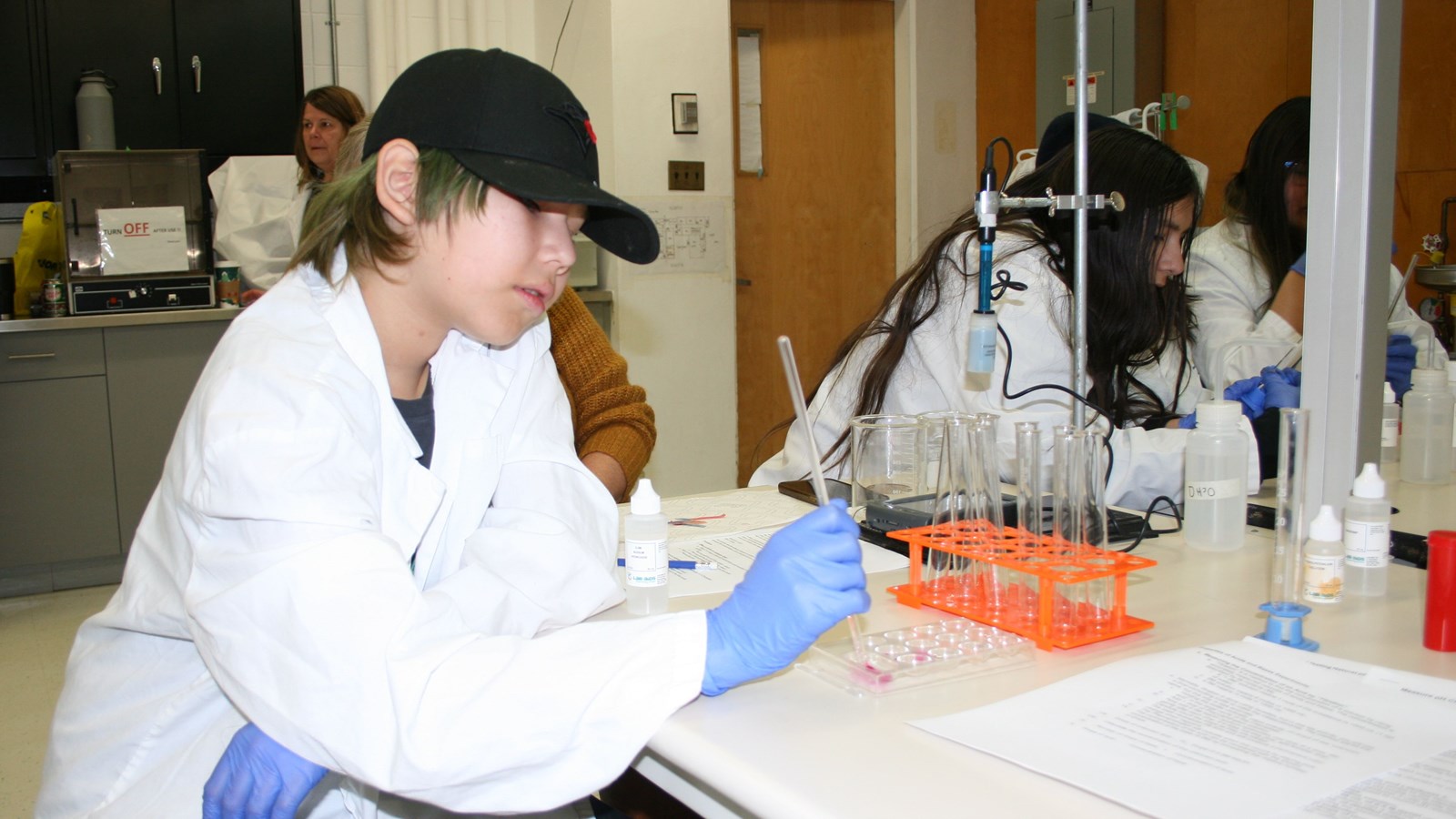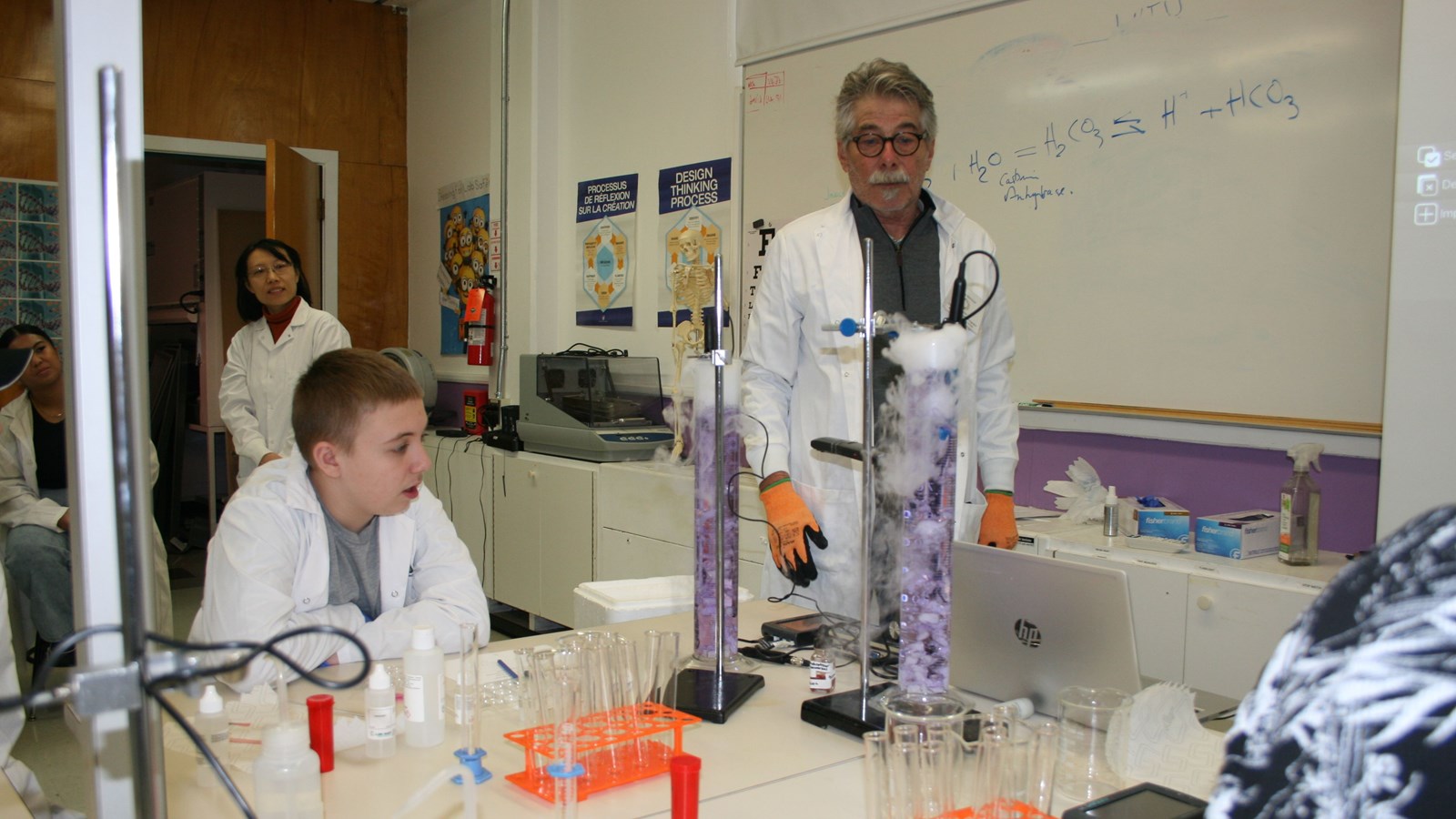Modern science meets traditional teachings
December 17, 2024 News Story
A Winnipeg School Division program is proving that Indigenous knowledge and Western science can work together.
Bridging Wisdom and Science is a new learning series for middle school students that combines traditional Indigenous teachings with modern scientific inquiry.
“The idea is for Indigenous students from five different schools to learn together as a community, bridging Western science with ancestral knowledge, bringing those two worlds together,” said Dorothy Goddard, divisional support teacher.
“We hope what they’re learning here might inspire their Winnipeg Schools’ Science Fair projects.”
On December 10, Grades 7 and 8 students from David Livingstone, General Wolfe, Hugh John Macdonald, William Whyte and Niji Mahkwa schools gathered at the Inner City Science Centre in Niji Mahkwa for the second session in the series.
The science portion of the session was led by Dr. James Gilchrist, head of the Department of Oral Biology at the University of Manitoba and director of the Biomedical Youth Program.
Alongside student volunteers from the Rady Faculty of Health Sciences, Gilchrist guided the students through a fun experiment that involved measuring pH and colour changes with dry ice – the solid form of carbon dioxide – in an alkaline solution.
“It’s really simple acid and base stuff, but less on the theory and more on the application side of it,” Gilchrist said. “The focus was to emphasize the point that carbon dioxide is a really important acidifier that we control in our bodies through respiration, but also that this whole carbon dioxide-bicarbonate-carbonic acid system exists in waterways and the oceans. We see that even small changes in the carbon dioxide of the atmosphere can have profound changes on how shellfish and reef life can survive.”
“It’s about starting a conversation about and bringing awareness to climate change.”
The first Bridging Wisdom and Science session took place at FortWhyte Alive on November 12.
In the morning, the students tested water quality with the help of FortWhyte Alive education staff.
In the afternoon, Cultural Grandfather Vern Dano led the group on a walk through the wildlife preserve, teaching students about the different plant species and their traditional uses.
“If we give the younger generation relevant, current, and correct information, they will be able to make conscious decisions that are holistic,” Dano said. “I want to address the physical, mental, emotional, and spiritual part of the land and of people. Not just dissecting it, but realizing it’s a whole. I talk about one consciousness and that everything is interconnected.
The third session of Bridging Wisdom and Science will again take place at Inner City Science Centre on January 21. Gilchrist said he’s planning a fun experiment where students will learn about DNA and build their own electrophoresis units using 9-volt batteries and, of all things, Skittles.
Gilchrist believes that by combining science with Indigenous wisdom, we can develop a more complete understanding of the world around us.
“Having spent time with Vern and also other Indigenous elders, the one thing that you recognize is that there is a focus upon the Earth and that we share common concerns for the environment,” Gilchrist said. “The interpretations of that, some are fact-based, some are metaphor, but fundamentally it’s about storytelling.
“Storytelling is huge. The way you tell a story is really important as to whether or not somebody will pick up on that story and run with it themselves. This program, the way it’s presented, is meant to stimulate curiosity. The idea to is if you have these great experiences for students, they’re likely to remember them more than if it’s just part of the regular science curriculum.”
Solara Garson, a Grade 8 student at William Whyte, said she likes the hands-on nature of the program.
“I like how it’s fun. We’re not just sitting and listening, we’re actually doing different activities,” she said.
A fourth Bridging and Wisdom session will occur at Oak Hammock Marsh or Birds Hill Provincial Park in May.



